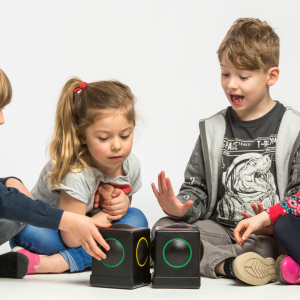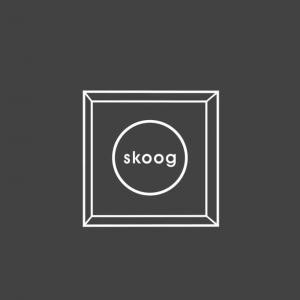One of the best bits of educational technology to come out of the special needs sector, Skoog, comes of age this year, moving out to a wider clientele with social media campaigns to Unleash your Inner Rockstar. This is a bit superfluous for me, Sal McKeown as I am well-known for having the voice of a frog and being tone deaf. However, I am just brilliant at being an appreciative audience. Everyone has their talents.
The last time I wrote about the Skoog it was for an early years magazine in 2016. Penketh South Nursery in Warrington obviously takes music seriously and was using a company called Learn To Play Live (LTPL) which employs tutors and teachers who are all professional performers, passionate about passing on their skills with percussion instruments from around the world, as well as more familiar instruments such as keyboards and ukuleles.
It’s a highly innovative digital music device that can connect to software on computers or its own app on iPads. It may be just a simple cube but in the right hands, it’s extremely powerful for making music. And now the people behind it are sharing the experiences and achievements of its users across social media.
‘A rugged, squeezy cube which responds to the lightest touch’
The children in Warrington had been introduced to the Skoog which I described as, “a rugged, squeezy cube which responds to the lightest touch but can also withstand throwing, pummelling and thumping. The children are learning to squeeze the Skoog to blow a flute or tap it to strike a xylophone.”
Nursery manager Claire Roper found that the children could follow colour coding on a printed sheet to play their favourite songs and told me, “The children love the Skoog. This is quite a technological age and the children respond well to anything which has a computer element.” So, with the Skoog we have a great device for entertaining and educating our budding musicians in nursery.
However, that same piece of kit is so versatile that it can be used in music therapy, for adults with disabilities and in mainstream too. Fiona Sharp is a musician who has worked in special schools and care homes in Edinburgh, Glasgow, Fife, Dundee and Angus. Now she is turning her attention to mainstream high schools with young people who may have problems with concentrating, managing emotions and keeping on task.
Fiona is working with groups whose dream it is to form a band, play an instrument or be involved in sound recording and studio work. She said: “The Skoog, which they have used alongside GarageBand, has encouraged the pupils to look at the Skoog as a technical and ‘cool’ musical instrument to use in addition to the standard rock band instruments.”
To get a flavour of what’s possible, take a look at a video below of the Skoog in action with Sam performing Jessie J’s “Price Tag” (also pictured above)
<
If you are working with students using the Skoog, get posting your videos on social media:
YouTube
Facebook
Twitter
Linkedin
Sal McKeown is a freelance journalist covering disability, education and technology. She is currently writing The Family Guide to Dyslexia, a series of e-books published on Amazon.
How can I have a go?
- To get your very own Skoog 2.0, online or instore at Apple or online on Amazon.
- Get in touch with Skoogmusic here

